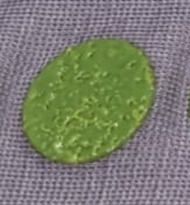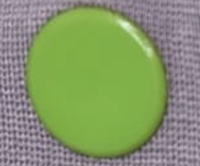- PolyJet Legacy Printers
- Alaris30 V1
- Connex260
- Connex350/500
- Eden250
- Eden260
- Eden260V/VS
- Eden330
- Eden350
- Eden350V/500V
- J700 & J720 Dental
- J750/J735
- J750 Digital Anatomy
- Objet24/30 V2 Family
- Objet24/30 V3 Family
- Objet30 V5 Pro & Prime
- Objet260 Connex 1-2-3
- Objet260 Dental & Dental Selection
- Objet350/500 Connex 1-2-3
- Objet1000 Plus
- PolyJet Materials
- Agilus30 family
- Biocompatible
- Biocompatible Clear MED610
- Dental Materials
- Dental TrueDent Materials
- Dental TrueDent-D Materials
- Digital ABS Plus
- DraftGrey
- Elastico Clear/Black
- High Temperature
- PolyJet Support
- Rigur & Durus
- Tango
- ToughONE™
- MED610-DSG
- Transparent
- Vero ContactClear
- Vero Family
- Veroflex
- VeroUltra Opaque
- Vivid Colors
- Stereolithography Materials
- Somos® 9120™
- Somos® BioClear™
- Somos® DMX SL™ 100
- Somos® Element™
- Somos® EvoLVe™ 128
- Somos® GP Plus™ 14122
- Somos® Momentum™
- Somos® NeXt™
- Somos® PerFORM™
- Somos® PerFORM Reflect™
- Somos® ProtoGen™ 18420
- Somos® ProtoTherm™ 12120
- Somos® Taurus™
- Somos® WaterClear® Ultra 10122
- Somos® WaterShed® AF
- Somos® WaterShed® Black
- Somos® WaterShed® XC 11122
- Somos® WaterShed® XC+
3DFashion - Deformations
Deformations of 3D Print on Fabric
Sometimes, deformations appear on the top surface of the 3D print. They appear as sunken-in areas or breaks in the 3D print.

Possible Causes and Solutions
Absorption of the Printing Materials into the Fabric
The printing material might be absorbed into the fabric in such a way that it causes deformities.
Solution 1: Print the Fabric Analyzer and follow instructions as described in the relevant best practice guide: Printing on Fabric with J850 Prime FabriX - EN PolyJet Best Practice and Printing on Fabric with J850 TechStyle - EN PolyJet Best Practice.
Solution 2: Print an adhesion layer that is thick enough to compensate for the absorption.

Solution 3: Change the design to compensate for the absorption of the material into the fabric.
Preventive Measures: Use the Fabric Analyzer, Absorption test, with the selected fabric and printing material to estimate the adhesion layer thickness to compensate for the absorption issue.
Tray Height is Not Calibrated to Match the 3D Print
The accuracy of the tray height calibration (Z-Start) can cause quality issues such as deformities and breaks in the 3D print. This indicates that the Z-Start needs to be recalibrated to correct the tray height.

Solution 1: Print the Fabric Analyzer and follow instructions as described in the relevant best practice guide: Printing on Fabric with J850 Prime FabriX - EN PolyJet Best Practice and Printing on Fabric with J850 TechStyle - EN PolyJet Best Practice.
Solution 2: Recalibrate the tray height (Z-Start).
Solution 3: Increase the adhesion layer thickness.
Preventive Measures: Use the Fabric Analyzer, Quality test, with the selected fabric and printing material to check the accuracy of the tray height calibration (Z-Start).
